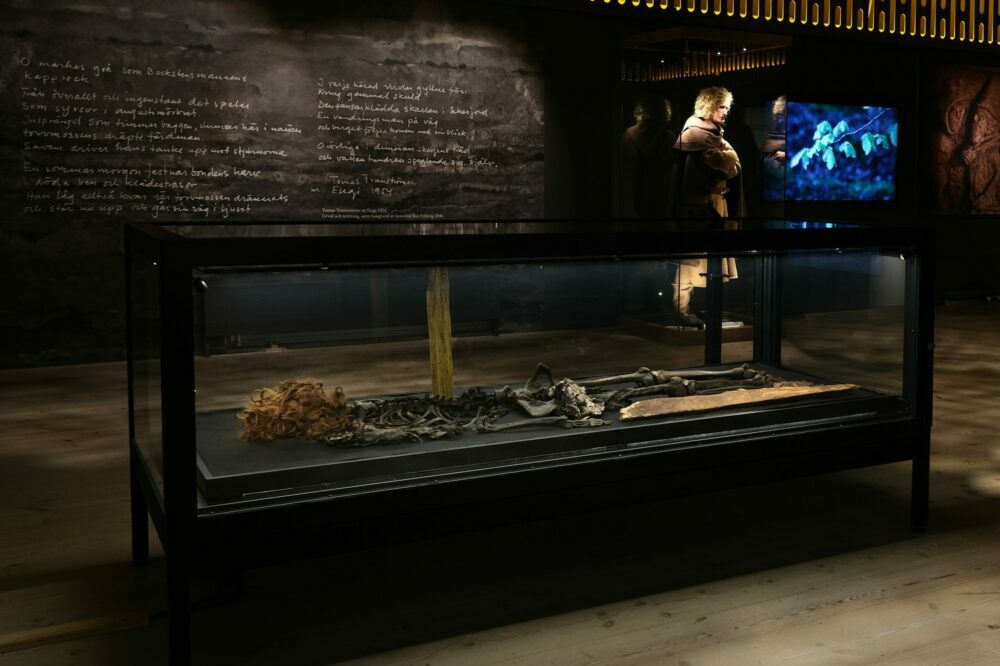3. The Bocksten Man’s skeleton
You’re now standing right in front of the Bocksten Man! No one alive today knows what the man’s real name used to be. His nickname refers to the bog where he was found, in a place called Bocksten, about 25 kilometres east of Varberg. It’s a fitting name, really, because it’s thanks to the bog that the man’s remains were preserved so well. The peat bog in which the corpse was found contains so little oxygen that the man’s body never decayed or decomposed.Bogs are also highly acidic, which has a preservative effect.
When the find was transferred to the local museum in 1936, all its different parts had to be taken care of. The case in front of you not only contains the man’s skeleton, but also his actual hair. Today, it’s a reddish brown. But that’s because tanning agents in the bog discoloured the hair, just like it did the rest of the remains. Recent DNA tests indicate that the Bocksten Man most likely had dark hair when he was alive, though. Even the man’s brain was preserved; it’s in a jar in one of the other display cases, near his clothes.
Based on his skeleton, researchers estimate that the Bocksten Man died around the age of 30 to 35. He was roughly 171–172 cm tall – the average height for a man at that time. His body doesn’t seem to have suffered from any deficiencies, so we can assume the Bocksten Man never experienced famine.
An analysis of his body revealed that the man hadn’t been all that muscular. This suggests he wasn’t a labourer. His right arm was slightly more toned, though, so he was probably right-handed.
Dating of the body and its outfit suggest the Bocksten Man died some time between 1350 and 1370. We don’t know how he died – but it’s clear he wasn’t put to rest peacefully. Inside the case, next to the skeleton, you can see a long oak pile, flanked by parts of two birch piles. The Bocksten Man was found lying face down in the bog; these three piles had been driven through his body from behind. The pile piercing the skeleton today is just a replica.
At the time, people believed that impaling someone’s corpse, especially by driving an oak pile through their heart, would prevent them from coming back to haunt the living as a ghost. Folk tales often portray individuals who are impaled in a rather negative light: they’re accused of having been cruel, evil people who abused their power, or criminals, or people who dabbled in sorcery.
The fact that the Bocksten Man was buried face down might be because his contemporaries wanted to humiliate him even in death.

